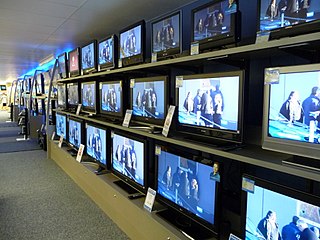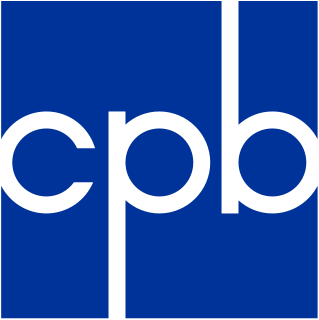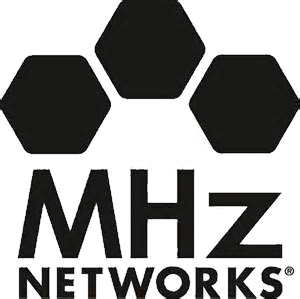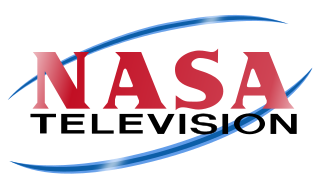| Public Access Organization | |
|---|---|
 Control Room B at FPA | |
| Name | Fairfax Public Access |
| Acronym | FPA |
| Carriers | Cox Cable Verizon Fios Comcast Cable (Reston) |
| Channels | Channel 10 Channel 30 Channel 36 Channel 37 Radio Fairfax WRLD International Radio |
| Charter Type | Public |
| Founded | October 1981 |
| High-Definition | Yes |
| Location | 2929-S Eskridge Road Fairfax, Virginia 22031 |
| Owner | Fairfax Cable Access Corporation |
| Website | www.fcac.org |
Fairfax Public Access (FPA) is a trade name for a Virginia non-stock corporation, Fairfax Cable Access Corporation, that was incorporated in October 1981 as a non-profit Public, educational, and government access (PEG) cable tv station based in Fairfax, Virginia, and operates four cable TV channels. [1]
Public, educational, and government access television refers to three different cable television narrowcasting and specialty channels. Public-access television was created in the United States between 1969 and 1971 by the Federal Communications Commission (FCC) and has since been mandated under the Cable Communications Act of 1984, which is codified under 47 USC § 531. PEG channels consist of:
- Public-access television – Generally quite free of editorial control, a form of non-commercial mass media where ordinary people can create television programming content which is transmitted through cable TV The channels are reserved free or at a minimal cost. The local origination television content revolves primarily around community interest, developed by individuals and nonprofit organizations.
- Educational-access television – Is distance education, a curated form of educational television, it is a synchronous learning educational technology unique to cable television systems and transmit instructional television, on Time Warner Cable channel 21, programming within city limits. Educational-access channels are generally reserved for educational purposes and are not for government-access or public-access television. Many schools have adapted educational access channels to enhance school curriculum. Some schools have done this better than others. Although the use of television in schools can be traced to those schools serving the bedroom communities of Manhattan in the 1960s, where executives and technicians of early television lived, the creation of PEG channels expanded the value of television as a school or community resource. Students produced and aired community stories in part to serve community stakeholders and in part to engage in active learning. These schools developed school-based community television as a storytelling laboratory.
- Government-access television – Cable channel capacity for the local government bodies and other legislative entities to access the cable systems to televise public affairs and other civic meetings. Government channels are generally reserved for government purposes and not for education-access or public-access television.
- Leased access – Cable television channels that are similar to commercial television where a fee is paid-for-services of reserved channel time.
- Municipal-access television – or "Community Access television" are ambiguous terms that usually refer to a channel space assigned on a Cable TV System intended to provide the content to all or some of the above listed access channels, and may contain other "access" programming such as "religious access" or the TV programming of a local institution, such as a college or a library. These channels are usually created as cost saving measures for the Cable TV company if their franchises or governing authorities allow it.
- Hybrid – Often, one channel will take on the role of another channel type on a regular basis. An example of this would be a college with a strong television production curriculum assumes the roles of educational access and public access. Beyond the typical curated educational access programming, a public access television element would be added where public access television producers would make shows using college owned equipment and college students as crew. This can be very beneficial to both entities, as the students earn credits for the work while contributing to the public access channel. However, difficulties can arise when the programming made for public access is of a type that does not reflect the values or tastes of the supporting college, and in such situations, colleges often make the decision to downplay or abandon the public access element of the channel, depending on how much funding is earned by assuming the public access television duties.

Fairfax, colloquially known as Fairfax Courthouse, Downtown Fairfax, or Fairfax City, and officially named the City of Fairfax, is an independent city in the Commonwealth of Virginia in the United States. As of the 2010 census the population was 22,565, which had risen to an estimated 24,013 as of 2015.
Contents
In 1984, FPA operations came under the Cable Communications Act of 1984, that permitted US cable companies to fund local organizations to provide training and access to media technology to the general public. That Act facilitated cable companies' carriage of programming created by those local organizations. [2]
FPA operates Channel 10 for general purpose television shows in English, Channel 30 for general purpose television shows in languages other than English, Channel 36 for spiritual and religious programming and Channel 37 for cable-cast radio. In addition, FPA provides Internet-streaming for its radio broadcasting.

Television (TV), sometimes shortened to tele or telly, is a telecommunication medium used for transmitting moving images in monochrome, or in color, and in two or three dimensions and sound. The term can refer to a television set, a television program, or the medium of television transmission. Television is a mass medium for advertising, entertainment and news.

English is a West Germanic language that was first spoken in early medieval England and eventually became a global lingua franca. It is named after the Angles, one of the Germanic tribes that migrated to the area of Great Britain that later took their name, as England. Both names derive from Anglia, a peninsula in the Baltic Sea. The language is closely related to Frisian and Low Saxon, and its vocabulary has been significantly influenced by other Germanic languages, particularly Norse, and to a greater extent by Latin and French.

Radio is the technology of signalling or communicating using radio waves. Radio waves are electromagnetic waves of frequency between 30 hertz (Hz) and 300 gigahertz (GHz). They are generated by an electronic device called a transmitter connected to an antenna which radiates the waves, and received by a radio receiver connected to another antenna. Radio is very widely used in modern technology, in radio communication, radar, radio navigation, remote control, remote sensing and other applications. In radio communication, used in radio and television broadcasting, cell phones, two-way radios, wireless networking and satellite communication among numerous other uses, radio waves are used to carry information across space from a transmitter to a receiver, by modulating the radio signal in the transmitter. In radar, used to locate and track objects like aircraft, ships, spacecraft and missiles, a beam of radio waves emitted by a radar transmitter reflects off the target object, and the reflected waves reveal the object's location. In radio navigation systems such as GPS and VOR, a mobile receiver receives radio signals from navigational radio beacons whose position is known, and by precisely measuring the arrival time of the radio waves the receiver can calculate its position on Earth. In wireless remote control devices like drones, garage door openers, and keyless entry systems, radio signals transmitted from a controller device control the actions of a remote device.
In March 2018, FPA began broadcasting in High Definition on Cox Channel 10. [3]








